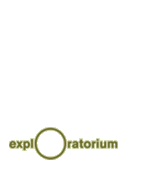To learn more about seed saving and
finding open
pollinated seeds, follow these links:
International Seed Saving Institute
http://www.seedsave.org/issi/issi.html
This group provides seeds and support to farmers in developing
countries. Their website includes background on why and how
to save seeds. The group also operates Seeds Trust (
http://www.seedstrust.com/
),
an online store offering heirloom, high altitude, and other
specialty seeds.
Seed Saver’s Exchange
http://seedsavers.org/Home.asp
Seed Saver’s publishes an annual catalog of seeds for
sale, developed by a nationwide network of farmers and gardeners.
Their grounds includes a 890 acre farm and a visitor’s
center in Decorah, Iowa.
Seed Savers’ Network
http://www.seedsavers.net/about/index.jsp
Based in Australia, this organization connects Australian
seed savers with each other to facilitate seeds exchange, and
has helped to establish seed networks in several developing
countries.
Native Seeds/SEARCH
http://www.nativeseeds.org
The goal of Native Seeds is to conserve cultural as well as
genetic diversity. They work with Native American farmers in
the American Southwest to preserve their crops and the stories
and native languages of the farmers who have developed them.
|
|
|
A Word to the Wise:
Remember, you can’t perpetuate
diversity by saving seeds from hybrid plants—this
means many of the seeds and plants you can buy at the
garden store. You need to start with what are called “open
pollinated” seeds.
What’s the difference? Hybrid
seeds are designed to produce very nice plants the
first time around. They are the result of a grower’s
deliberate pollination of one plant by another, usually
done by hand. Often this involves many crosses that
would be unlikely to happen without human intervention.
(to learn how to try hybrids for yourself, see our
Three
Ways to Make a New Plant
article). Seeds
from Great Grandma’s tomatoes haven’t
been through this. They are what is called “open
pollinated,” meaning
they’ve been bred without the help of humans.
(And just how does pollination occur? Find out about
The
Secret Lives of Flowers
.)
|

|


